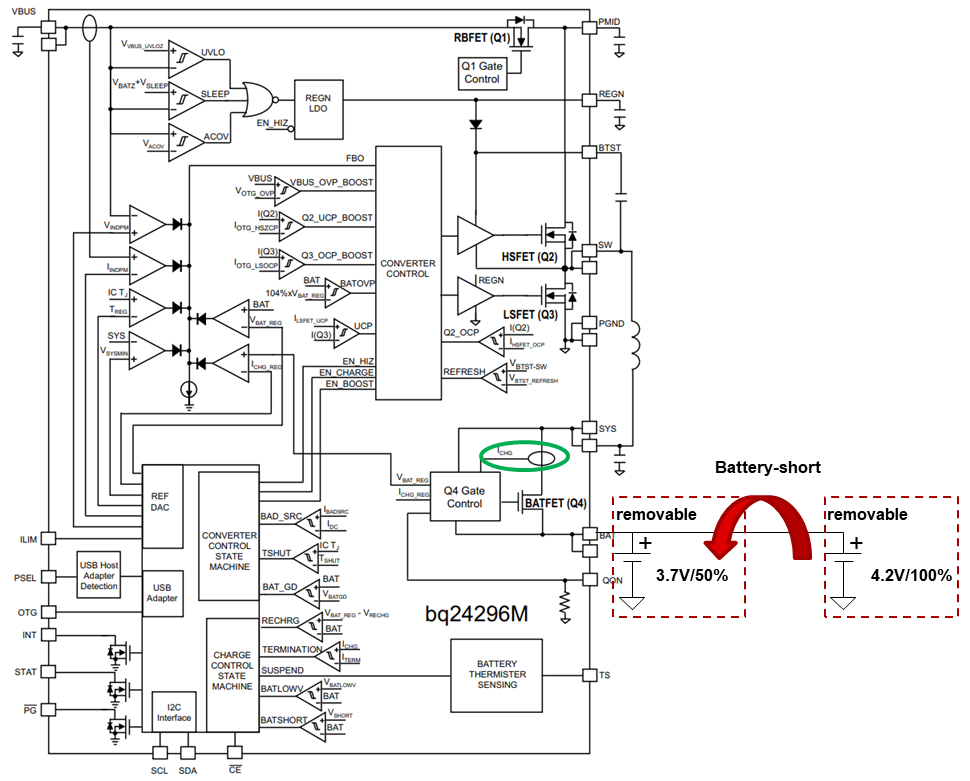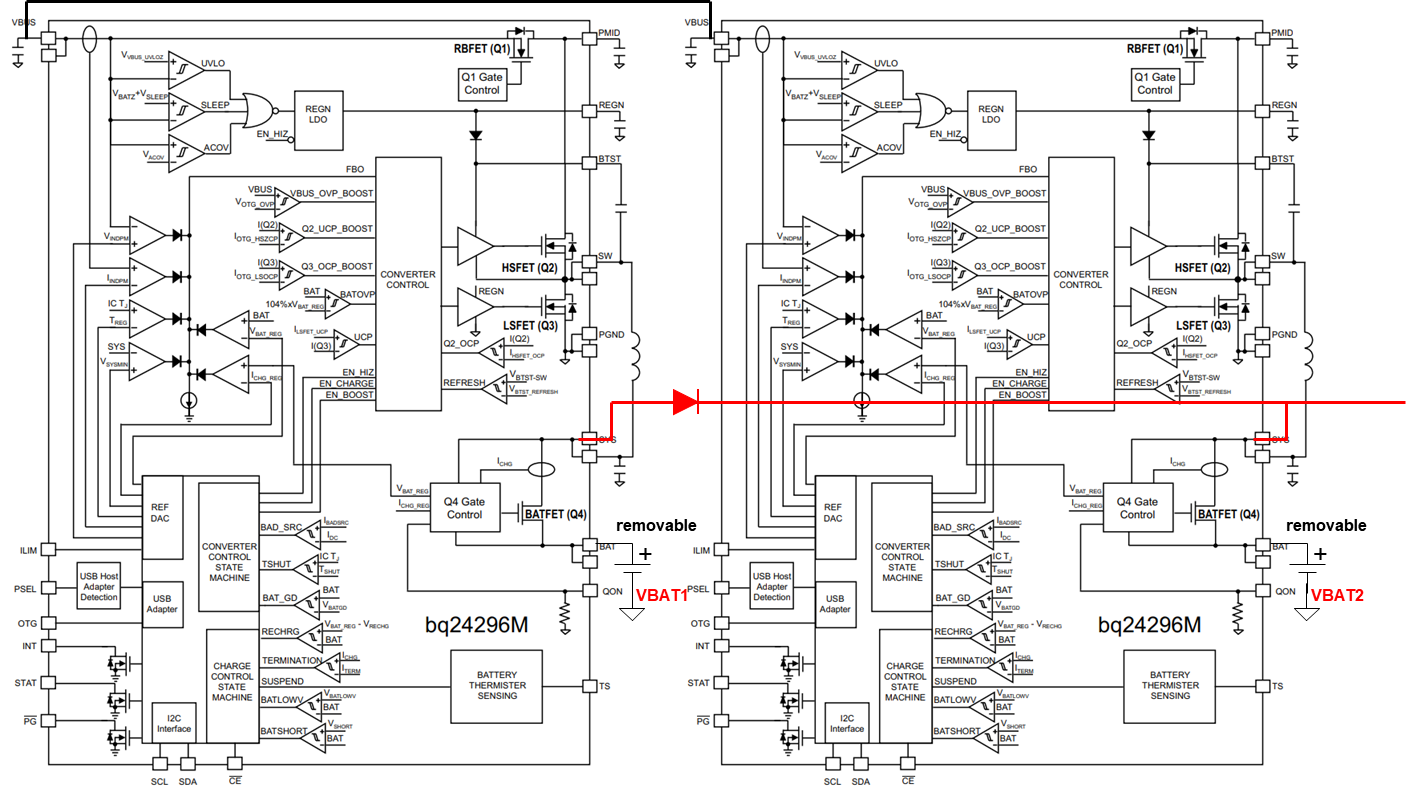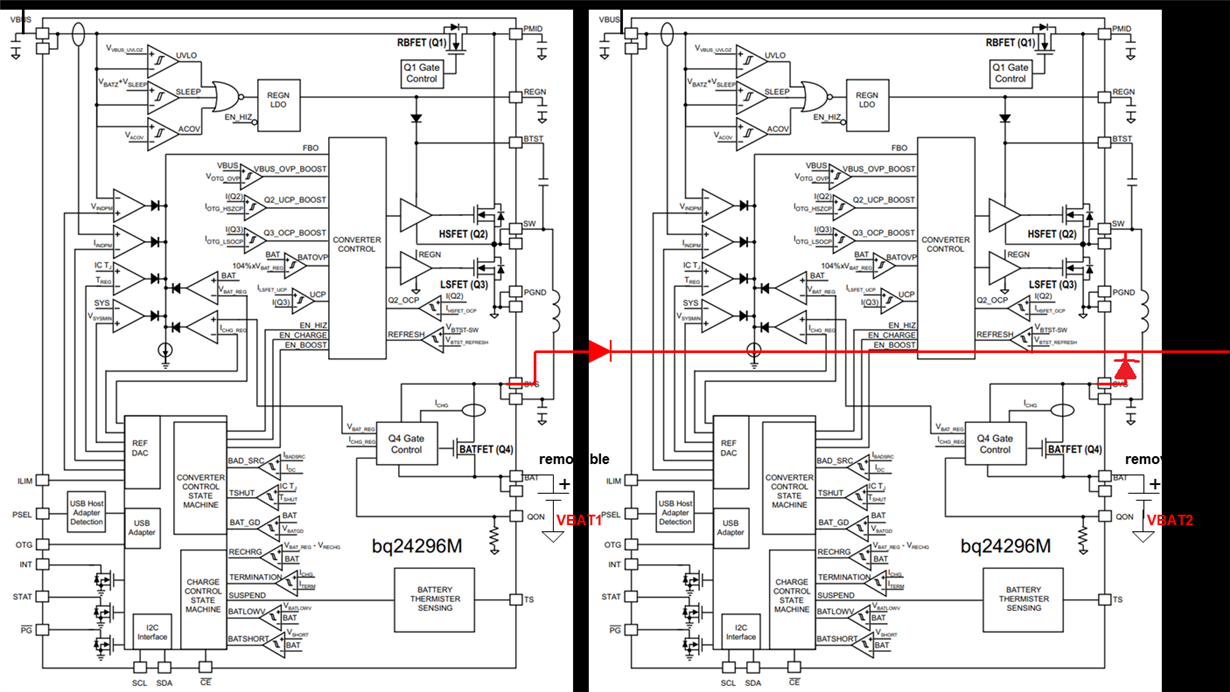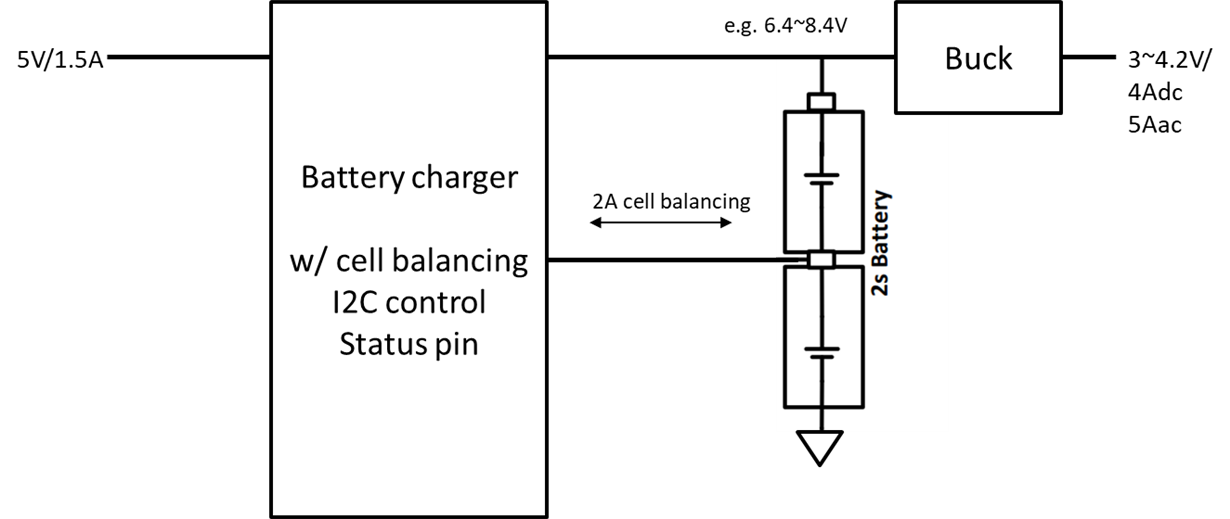Other Parts Discussed in Thread: BQ24250, BQ25883, BQ25890, BQ25887, TPS25942A, LM66100, TPS2121
Hi team,
I’m looking for 1/2s charger ICs supporting following requirement.
Could you let me know recommended devices that meet these requirement and also additional 1 question?
Regarding charger 1, it looks bq24296M supports power path management/ I2C/ STAT pin. If they need higher operating voltage, bq24250 should be candidate.
Regarding charger 2, I’m not sure 1s charger can support 1cell x2 in parallel but for 2s, bq25883/7 should be candidate(power path management/ I2C/ STAT pin).
Question
- Can 1s charger use for 1sx2 in parallel charring?
- Charger 1
- 1cell/ 3000~6000mAh Li-ion
- VIN: 5V 1.5A current limit
- V_SYS: 3~4.2V 5A_MAX
- When load current exceeds input current limit, charger IC must support to supply additional current from battery
- e.g. when load current is 5A and charger current limit is 1.5A, battery has to supply additional 3.5A or full 5A with no V_SYS stop.
- When load current exceeds input current limit, charger IC must support to supply additional current from battery
- Charging status indicator pin: charging/ recharging/ charging complete/ error
- I2C access
- Small package/ high efficiency/ low power consumption
- Charger 2
- 2 cells in series or 1cell x2 in parallel(not fixed yet)/ 3000mAh Li-ion
- Each battery pack is independent and charger must support to charge when each battery charging percentage is not exactly the same.
- e.g. battery A charged 100% and battery B charged 0% something like that.
- VIN: 5V 1.5A current limit
- V_SYS: 3~4.2V 5A_MAX
- When load current exceeds input current limit, charger IC must support to supply additional current from battery.
- l e.g. when load current is 5A and charger current limit is 1.5A, battery has to supply additional 3.5A or full 5A with no V_SYS stop.
- When load current exceeds input current limit, charger IC must support to supply additional current from battery.
- Charging status indicator pin: charging/ recharging/ charging complete/ error
- I2C access
- Small package/ high efficiency/ low power consumption
Regards,
Kai






